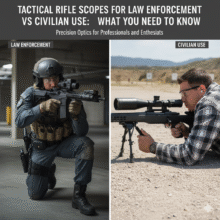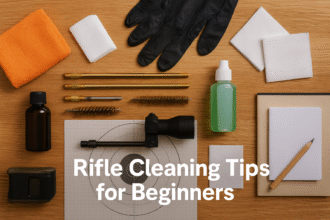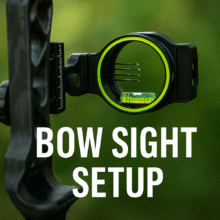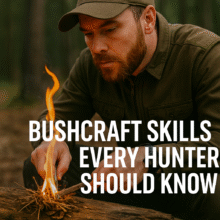Best Hunting Boots for Cold Weather in 2025
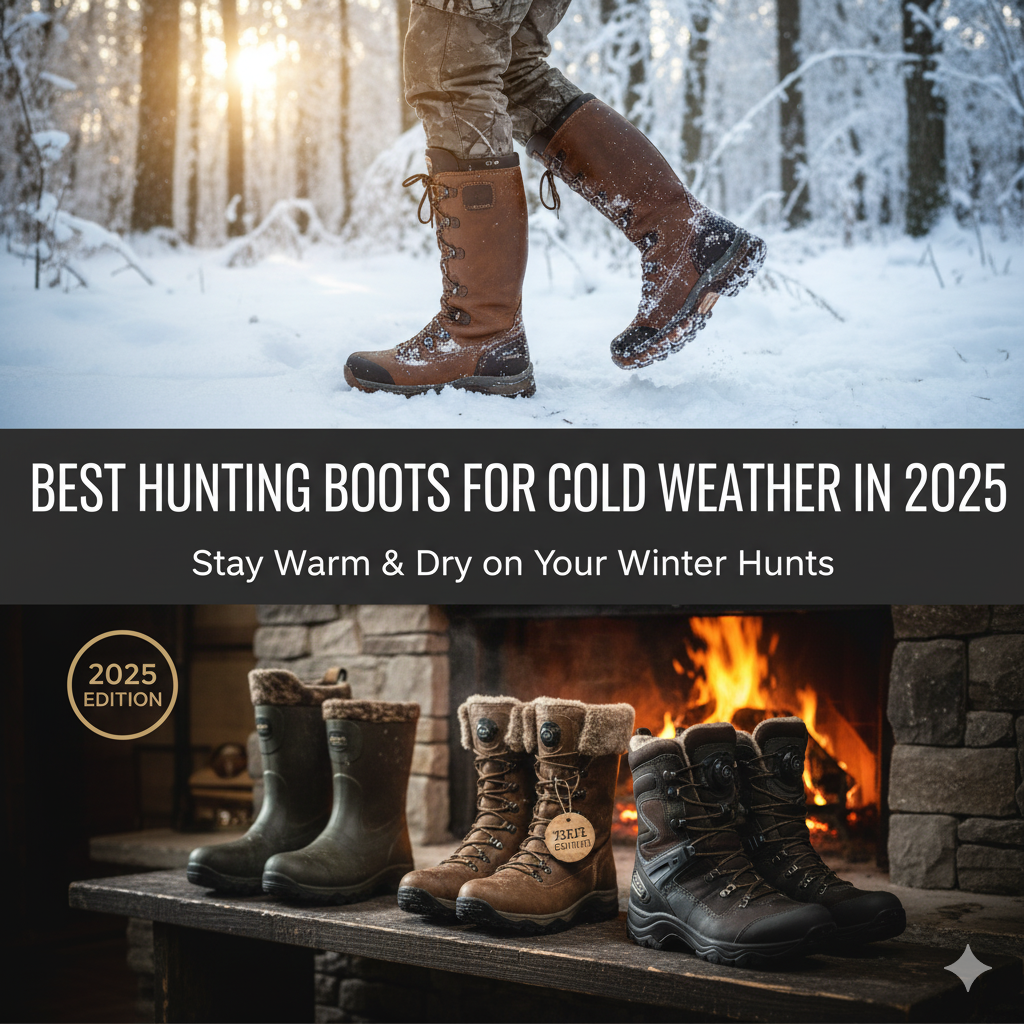
Hunting during cold weather isn’t just about layering up your boots matter. When you’re sitting in a tree stand, trekking through snow or waiting in marshy fields, a solid pair of cold-weather hunting boots can make the difference between a successful outing and frost-bitten toes. According to recent gear reviews, a few things are key: waterproof construction, insulation rated for low temps, reliable traction, and fit that suits how you hunt (moving vs. sitting).
Here are 5 top-recommended hunting boots for cold weather in 2025, all available on Amazon (or at least through Amazon listings) at the time of writing. For each I’ll give the key features, pros & cons, to help you pick what works for your style of hunting.
Table of Contents
1. LaCrosse Alphaburly Pro 18″
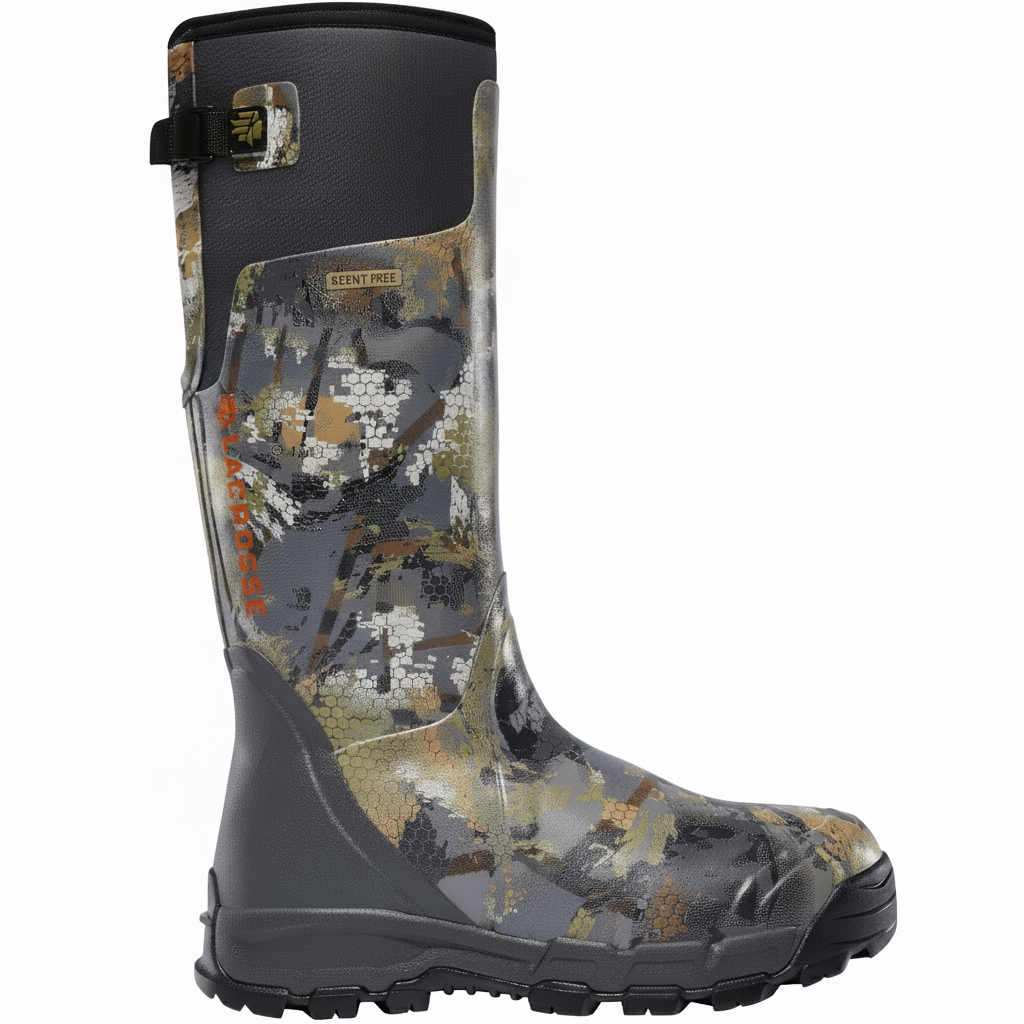
Key Features:
- Natural hand-laid rubber over a ~3.5mm neoprene core (waterproof rubber/ neoprene “rubber boot” type).
- Versions with heavy insulation (1000 g, 1600 g Thinsulate) exist for very cold conditions.
- Tall-shaft design (18″) helps protect against snow, marsh, deep wet ground.
- Designed for hunting (especially tree-stand, late-season) where you may be sitting idle in cold temps.
Pros:
- Excellent warmth for very cold temps when fully insulated.
- Waterproof rubber construction excels in wet, muddy, snowy conditions.
- Tall shaft offers extra protection (snow, marsh, deep ground).
Cons:
- Because of heavy insulation and rubber build, these boots can be bulky and heavy, which may reduce mobility.
- The tall-rubber style may be overkill for warm weather or short hunts/walking hunts.
- Break-in may be needed for comfort (rubber boots traditionally have less “give” than leather hiking style boots).
Best for: Late-season hunts, tree stand sits, marshy fields, conditions where you’ll be more stationary and need maximum warmth and waterproofing.
2. Korkers Neo Arctic
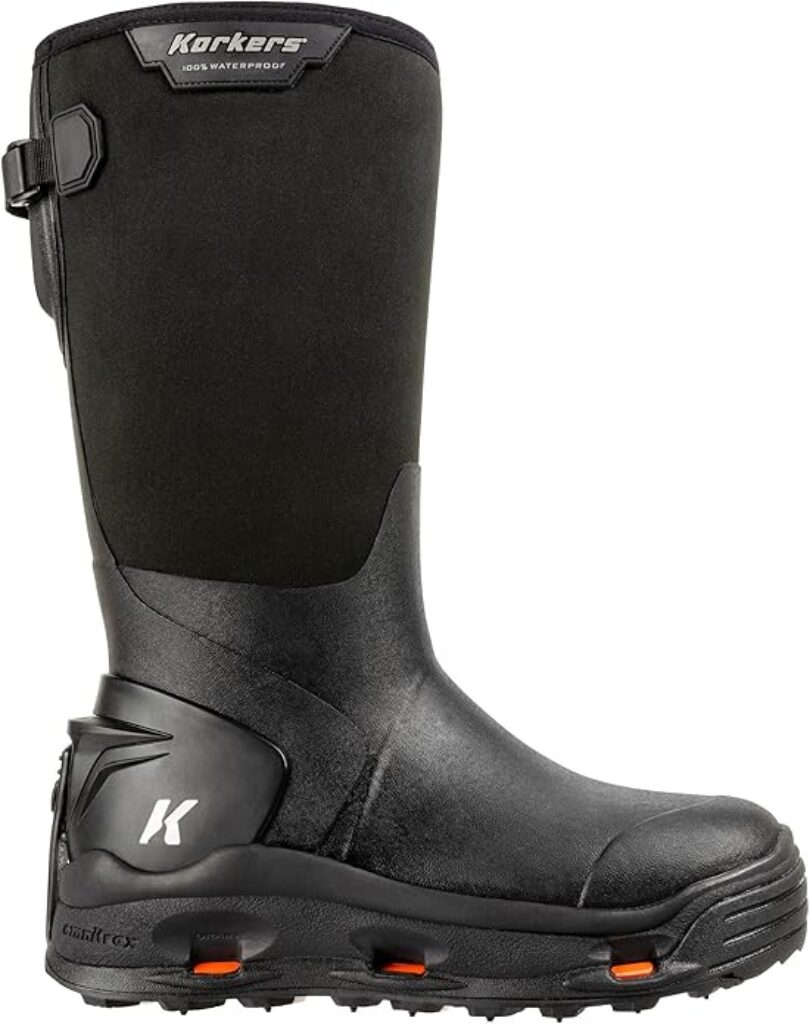
Key Features:
- Designed to handle extreme cold: specs list comfort rated to -60 °F (~-51 °C) with 8 mm neoprene plus felt lining.
- 16″ height (so very tall), 100% waterproof vulcanized rubber with an “OmniTrax” interchangeable sole system (so you can change out tread for ice, etc).
- Very focused on ultra cold/standing out in very harsh weather rather than light walking comfort.
Pros:
- Exceptional warmth for extremely cold environments or long sits in cold weather.
- Waterproof and high shaft keep feet dry and warm even in snow or wet marsh conditions.
- The interchangeable sole system gives flexibility for different terrain/conditions.
Cons:
- Very heavy compared to lighter hunting/hiking boots; may be less comfortable for heavy walking.
- Tall rubber boot style may feel bulky; not optimized for agile bump-and-run hunts.
- Probably more “overkill” for moderate cold hunts (if you’re in mild cold, could be more than you need).
Best for: Serious cold weather hunts in extreme conditions (deep snow, arctic/very late season, long sits), where warmth and waterproofing outrank mobility.
3. LaCrosse Ursa LS GTX
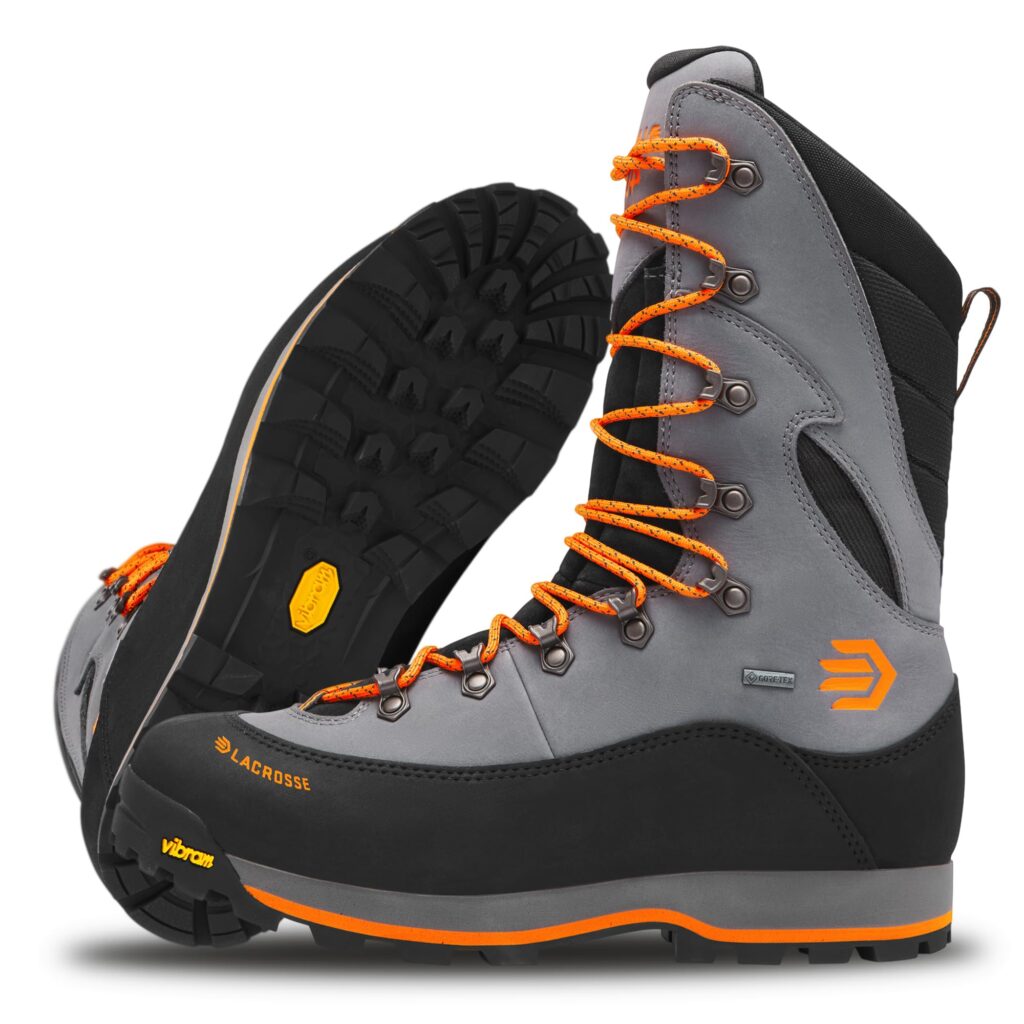
Key Features:
- Suede + abrasion-resistant nylon upper, built with Gore-Tex waterproof breathable lining.
- Insulated version (400 g PrimaLoft) for cold-weather performance.
- Designed for big-game late-season hunts where you’ll be moving and possibly carrying pack, meat, etc.
Pros:
- More “hiking boot” type profile than full rubber tall boots so better for walking, terrain, longer approaches.
- Waterproof breathable liner helps with moisture control (important if you’re moving and sweat).
- Good balance of insulation + mobility for those who walk in cold weather rather than sit.
Cons:
- Even though insulated, may not match the extreme warmth of heavy rubber-boot styles (for extremely cold still stands).
- Leather/suede/nylon may need more care (leather treatment) than full rubber boots.
- Insulated versions may cost more, and fit may be stiffer initially (break-in required).
Best for: Hunters doing moderate to late-season cold hunts where mobility matters (spot-and-stalk, rough terrain), rather than just sitting in a blind.
4. LaCrosse Alphaburly Pro 18″ 1000G

Key Features:
- A variation/insulated version of the Alphaburly Pro series, specifically 1000G insulation, waterproof, tall rubber style.
- Same tall-shaft waterproof design as earlier Alphaburly model but tuned for colder weather with heavier insulation.
Pros:
- Great for truly cold hunts where you’ll be stationary and need sustained warmth.
- Tall rubber design protects against snow, deep wet ground, and offers durability.
- Good “value” if you find the right insulation level for your needs (matching insulation to weather).
Cons:
- Like any heavy rubber boot with high insulation, mobility and weight may be trade-offs.
- If you use it for warmer conditions or long hikes, you may overheat or feel weighed down.
- As with tall boots, break-in and comfort for walking may be less than more supple hiking boot designs.
Best for: Late-season hunts in cold, wet, snowy terrain where you expect to be static for substantial time.
5. LaCrosse Alphaburly Pro 15″ 1600G
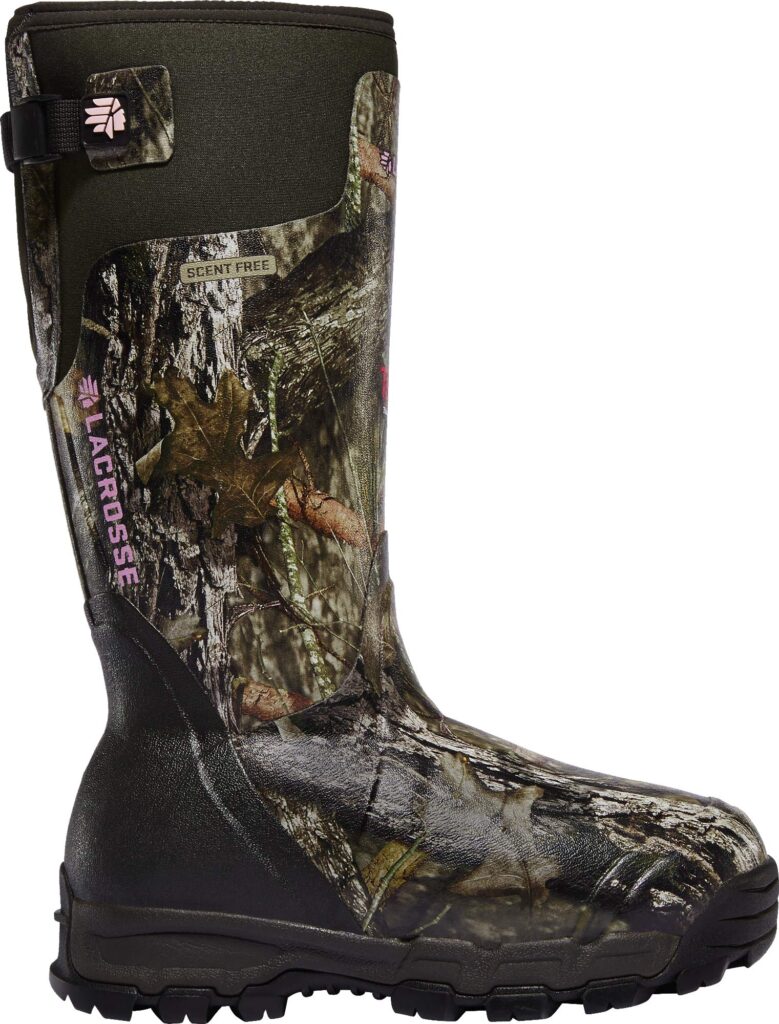
Key Features:
- A high-insulation version (1600G Thinsulate) of the Alphaburly line; 15″ height (slightly lower than 18″ version, but still tall).
- Designed for professional hunters or very late-season extreme cold, especially tree-stands or marsh hunts.
Pros:
- Among the warmest in the line, ideal for very low temperatures.
- Tall enough for snow/marsh, heavy insulation gives peace of mind in cold waits.
- Proven hunting-gear line with strong reputation.
Cons:
- Very heavy and bulky might not be comfortable on long hikes.
- Cost likely higher for this high-insulation variant.
- Overkill for moderate cold or warm up hunts; you might end up overheating or carrying unneeded weight.
Best for: Extreme late-season hunts in very cold climates, hunters planning to sit or wait, or marsh/field stands where you’ll be exposed to cold for long periods.
Choosing the Right Boot for You
Here are some key decision-factors to help select among the above:
- How cold / how long you’ll be out: If you’re in mild cold and mobile, a hiking-boot style (like the Ursa) may suffice. If you’re in deep snow, standing still for hours, go for tall rubber + heavy insulation (Alphaburly 15″/18″ or Neo Arctic).
- Mobility vs. insulation trade-off: More insulation + taller rubber = heavier boots. If you’re walking a lot, you may prefer something lighter.
- Waterproofing & terrain: Snow, marsh, wet ground require good waterproofing and high shaft. If terrain is dry or warm, less extreme may work.
- Fit AND layering: Cold-weather boots may require thicker socks or liners—make sure you try with what you’ll wear hunting. Also check width/comfort (some reviewers mention narrow fits).
- Care & maintenance: Leather/suede/nylon boots may need treatment; rubber boots less so, but fit/break-in still matter.
- Budget & value: Heavily insulated boots cost more. Choose insulation appropriate to your climate rather than maxing out if unnecessary.
- Return & sizing: Buying via Amazon means make sure return policy applies; ill-fitting boots ruin outings.
Conclusion
In conclusion, choosing the right hunting boots for cold weather is essential for both comfort and performance in the field. The right pair doesn’t just keep your feet warm it helps you stay focused, steady, and alert throughout long hunts in freezing temperatures. Whether you’re sitting in a tree stand for hours or trekking through snowy terrain, the boots you wear can make or break your experience. The LaCrosse Alphaburly Pro series and Korkers Neo Arctic are ideal for hunters who prioritize maximum warmth and waterproof protection, while the LaCrosse Ursa LS GTX offers a balance between insulation and mobility, perfect for more active hunting styles. When choosing, it’s crucial to consider factors like your activity level, insulation rating, waterproofing, and the specific terrain you’ll face. Don’t simply go for the heaviest insulation opt for what truly matches your environment and hunting habits. With the right boots, you’ll be able to stay dry, warm, and comfortable no matter how harsh the conditions get, ensuring your 2025 hunting season is both successful and enjoyable.


